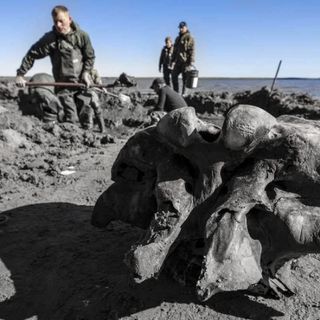Since the Paris Agreement was signed in December 2015, four environmental defenders have been killed every week on average, with 2019 seeing a record number of murders of environmental activists, according to a report by Global Witness, an international watchdog that has been working since 1993 to expose the links between natural resource exploitation and human rights abuses.
212 environmental activists were killed in 2019 for trying to defend their land and environment, according to the report, with Colombia and the Philippines documenting the most murders — 64 and 43 respectively.
“For years, land and environmental defenders have been the first line of defence against the causes and impacts of climate breakdown,” the report states. “Time after time, they have challenged the damaging aspects of industries rampaging unhampered through forests, wetlands, oceans and biodiversity hotspots.” But governments have been failing to protect these defenders from human rights abuses and lethal attacks.
Indigenous communities that opposed mining, and carbon-intensive oil, gas, and coal projects faced the most threats, and activists from these communities, including park rangers employed by the state to maintain conservation efforts, suffered lethal attacks designed to silence their voices, Global Witness found. One in 10 of these are women, who also faced sexual violence on top of the threats their male counterparts faced in speaking out against governments and corporations that exploited their land and environments.
Related on The Swaddle:
Environmentally-Sensitive Areas Still Battle Human Encroachment in More Than 150 Countries, Says Report
In Colombia, most of these attacks were carried out by organized criminal and paramilitary groups, who function in “a culture of widespread impunity.” For example, a 2016 Peace Agreement in Colombia incentivized farmers to move away from growing Coca — also used in the manufacture of cocaine — to alternatives such as cacao and coffee. Those who participated in this change were targeted by groups invested in the drug trade, which resulted in the death of 14 people trying to make the crop substitution program a reality. In another area, those protesting coal mining have been targeted with repeated threats, with their requests for governmental protection receiving no responses.
In the Philippines, Global Witness documented governmental armed forces labelling environmental activists as “anti-development rebels” or “terrorists” to delegitimise certain communities’ environmental concerns, which put these defenders at risk of lethal attacks, unjust prosecutions and other abuses and threats. A major industry in which this happens — in the Philippines and in the broader continent of Asia — is agribusiness, in which lands right defenders (mostly farmers) go up against palm oil and sugar companies that are either encroaching upon or exploiting their land. “As consumer demand grows and industrial agriculture expands, destructive projects are imposed on communities without their consent, driving increased conflict between big business, landowners and local communities,” the report states.
One way to safeguard these activists’ rights is to involve indigenous communities in land rights discussions and establish a framework that prioritizes dismantling land inequality. Another way is to guarantee that industry projects that require said land go through a rigorous process that explicitly requires informed consent from the people living and working on the land, and includes thorough social and environmental impact assessment that is then made public. With the coronavirus pandemic putting climate-related advocacy on the back burner, it’s of the utmost priority that indigenous communities and environmental activists within them are encouraged, protected and listened to.
With the new Environmental Impact Assessment draft, India, on the other hand, seems to be going in the opposite direction.




